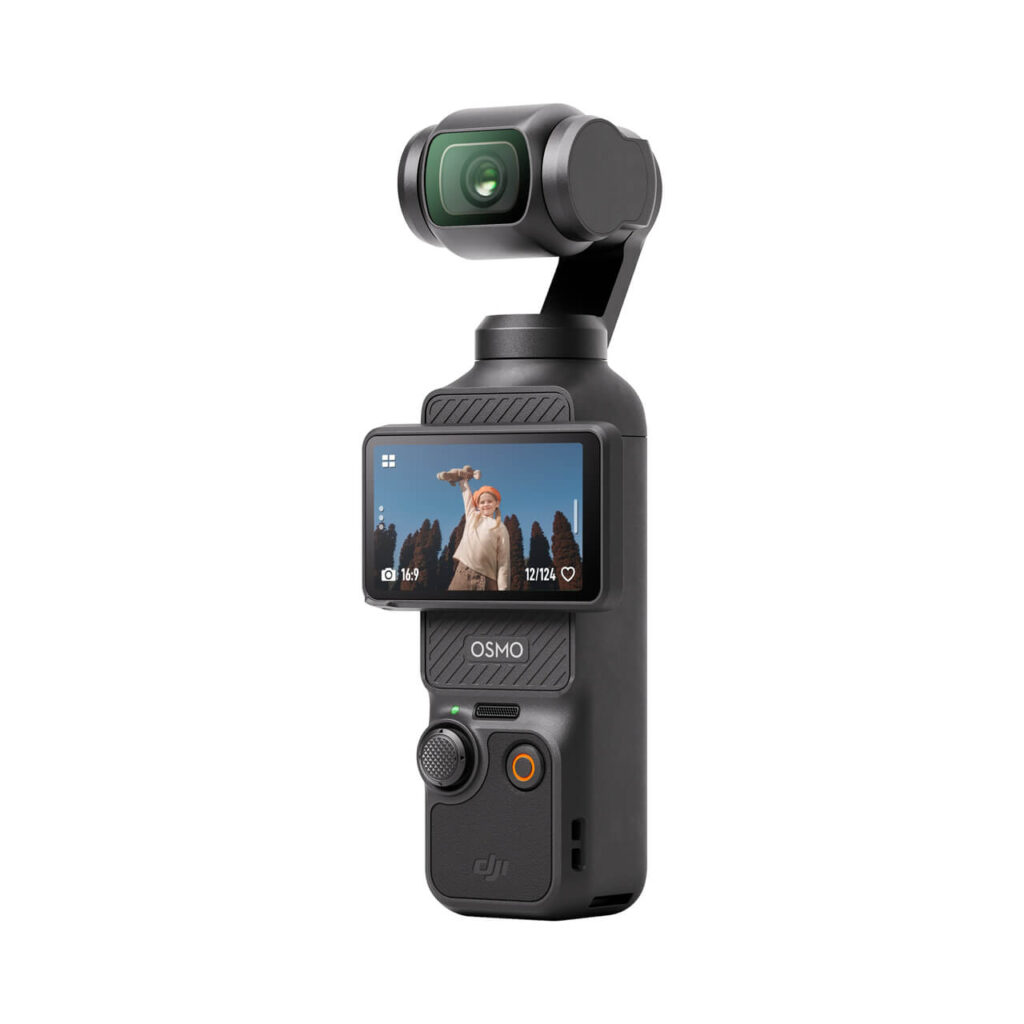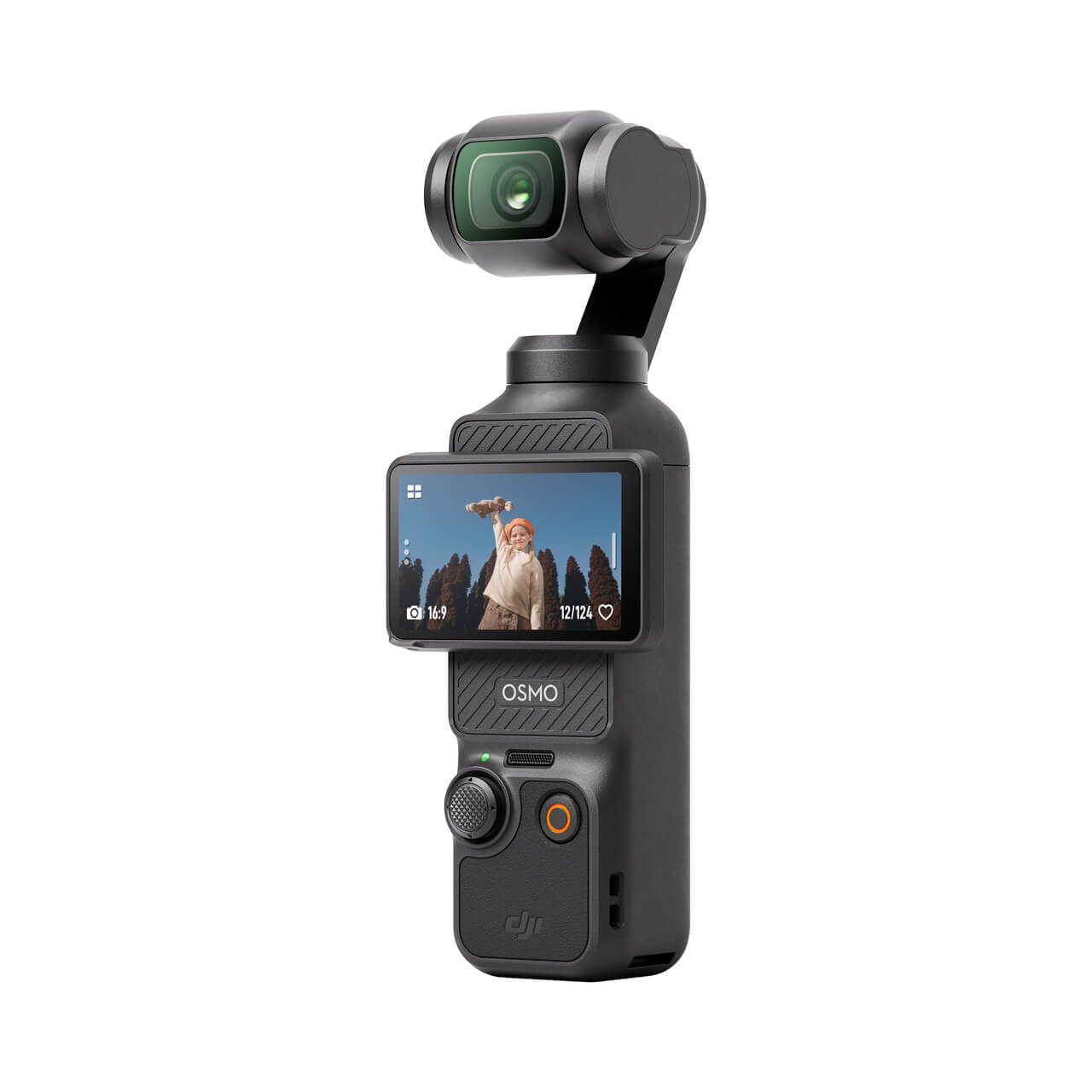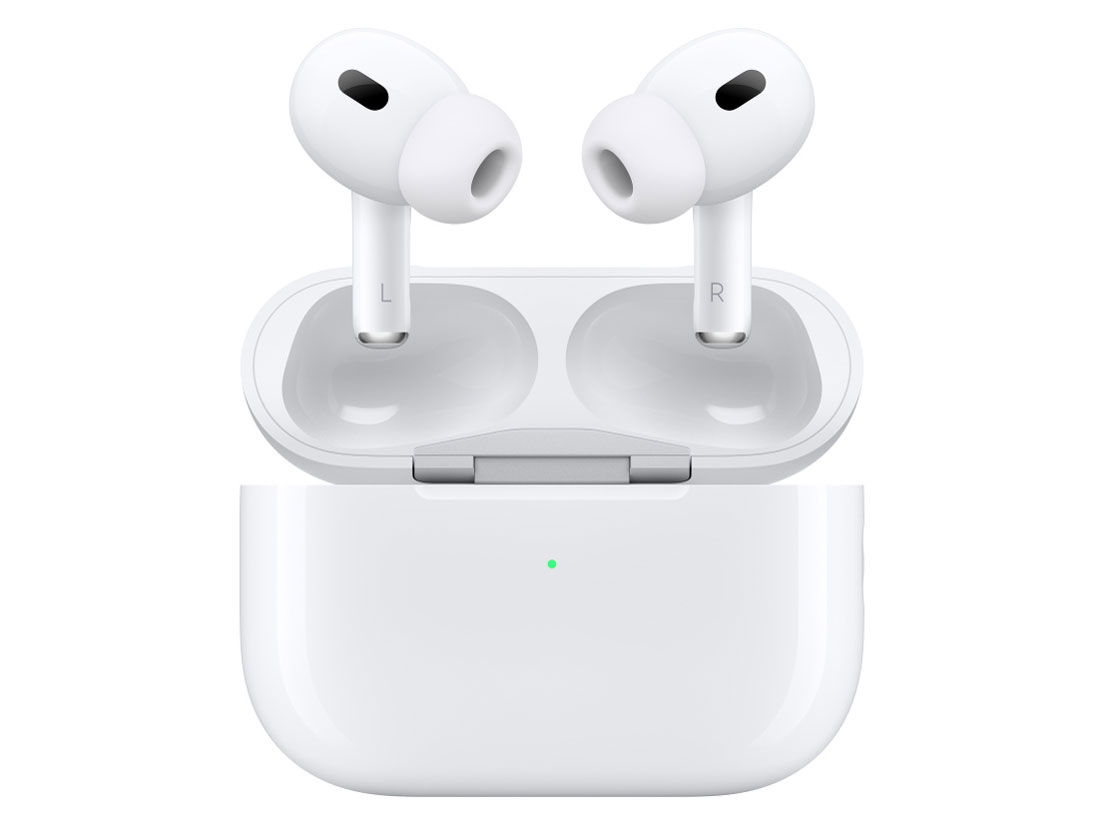You might be drawn to the DJI Osmo Pocket 3 because you want a compact, one-handed camera that delivers cinematic video—or because you crave stable footage while walking, vlogging, or traveling without lugging around bulky gear. At the same time, you may hesitate due to concerns like whether its image quality and low-light performance really live up to the hype, or whether its small form factor comes with trade-offs in durability, controls, or usability.
To answer these questions, we examined how Japanese users—famous for their meticulous, detail-oriented reviews—evaluate this model.

What’s DJI Osmo Pocket 3
The DJI Osmo Pocket 3 is a compact, gimbal-stabilized camera geared toward vloggers, content creators, and mobile filmmakers who demand high-grade imaging in a pocket-sized form. Released in 2023, it represents DJI’s latest effort to combine mechanical stabilization, 1-inch sensor performance, and video flexibility in a handheld package. Its strength lies in delivering pro features in a small body, bridging the gap between action cams and mirrorless setups.
Features
1. 1-Inch CMOS Sensor & Color Profiles
The device uses a 1-inch CMOS sensor, offering improved dynamic range and low-light performance compared to smaller sensors. It supports 10-bit D-Log M and HLG profiles for more flexible grading.
2. Video Capabilities & Frame Rates
It can shoot up to 4K at 60 fps, and supports slow motion up to 4K at 120 fps (or reduced resolutions for higher frame rates). Different zoom modes (e.g. 2× digital at 4K) and livestream support via UVC are also available.
3. 3-Axis Gimbal & Stabilization
A mechanical 3-axis gimbal keeps footage stable even when walking or during moderate motion. DJI’s tracking and motion modes—such as ActiveTrack 6.0 and Motionlapse / Hyperlapse—expand creative options.
4. Rotatable Touchscreen & Format Flexibility
It features a 2-inch rotatable touchscreen, allowing quick switching between horizontal and vertical framing (useful for reels, TikTok, or stories). The UI is optimized for intuitive control while shooting.
5. Portability, Battery & Connectivity
Measuring roughly 139.7 × 42.2 × 33.5 mm and weighing around 179 g, it remains pocketable despite its advanced internals. The internal battery is rated to support approximately 116 minutes of 4K footage (or longer at lower resolutions) and supports fast charging. Connectivity includes Wi-Fi, Bluetooth LE, and it functions as a UVC webcam.
Variants & Bundles
DJI offers the Osmo Pocket 3 in a standalone body as well as a Creator Combo bundle, which includes accessories like the extended battery handle, mini tripod, and DJI Mic 2 wireless microphone.
Positive Reviews
- Reliable mechanical stabilization for handheld shots. Multiple users said walking clips looked “like a dolly,” with tracking enabled feeling as if an extra cam operator followed them smoothly.
- Strong subject tracking. Reviewers noted the camera stayed locked on faces during vlogs and dances, even when the subject moved quickly or turned away.
- Low-light performance exceeds smartphones. Several users filmed night streets, fireworks, and indoor scenes with clean detail and minimal noise compared with their phones.
- Travel-friendly form factor. Many travelers replaced larger rigs, saying this device lived in a jacket pocket or small bag and came out more often than mirrorless kits.
- Useful firmware progress. Long-time owners reported updates over the year that improved usability and added modes, making the device feel more refined over time.
- High perceived image quality for the size. Users upgrading from earlier models or phones described footage as “crisp” and “TV-sized-screen ready,” with pleasing color out of camera.
- Quick, practical charging. Several noted the battery refills fast over USB-C; a brief café break brought them back to near-full for the rest of the day.
- Larger, brighter screen vs. prior generation. Upgraders said the new display made framing and menu navigation easier outdoors.
- Works well as a “leave the big gimbal at home” kit. Some who own full stabilizers said they stopped carrying them for casual shoots after getting this model.
- Solid built-in microphones for casual use. Users filming trips and family events said voice capture was clear enough without external gear.
- Handy “rotate-to-power-on” interaction. Owners appreciated flipping the display to wake and start filming, which helped them catch spontaneous moments.
- Smooth timelapse, panorama, and slow-motion tools. Multiple reviewers enjoyed motion-lapse at dinners and travel panoramas, calling the effects “fun but practical.”
- Face-first vlogging feels natural. People highlighted front-facing tracking that kept them centered while walking or presenting.
- Stabilization without heavy cropping. A few users liked that mechanical correction preserved more field of view than software-only systems.
- Good OLED visibility in daylight. Travelers said they could see framing in bright sun without shielding the screen.
- Surprising still-photo results at night. Some reported city nightscapes and illumination shots looked cleaner than their phone’s ultrawide photos.
- Practical ecosystem options. Owners praised the battery handle and small wireless mic as compact add-ons that extend shooting and audio flexibility.
- Easy delegation to non-experts. Families said even relatives unfamiliar with cameras managed to capture steady clips during events.
- Sensible price-performance for frequent travelers. Long-term users felt the cost paid off after many trips, citing two years of regular use without issues.
- AF that usually “gets it.” Multiple users remarked the autofocus latched onto faces and subjects quickly in most real-world scenes.
- Discreet presence in public. Reviewers liked that the small, vertical shape drew less attention than a larger camera rig while sightseeing.
- Fast boot to record in typical use. Some owners reported flipping the screen and getting rolling quickly for short, everyday captures.
- Clean HDR video look. Users shared that high-contrast scenes like illuminations rendered with balanced highlights using HDR modes.
- One-inch sensor benefits depth and dynamic range. Upgraders from earlier models noticed more highlight headroom and natural background separation in daytime shots.
- Versatile companion to bigger systems. Professionals mounted it alongside full-frame bodies to grab a stabilized wide angle without carrying another gimbal.
Negative Reviews
- Gimbal fragility is a recurring worry. One user heard scraping sounds within a month of light indoor use; another said a ~30 cm drop led to “gimbal protection” errors and loss of control.
- Battery life feels short for events. Several reported rapid drain in high-quality modes and wished for a swappable pack instead of relying on a handle or power bank.
- Non-removable battery limits recovery mid-shoot. A reviewer described the unit becoming unresponsive when hot, with no way to hard-pull the battery during a long recording.
- Heat management during extended takes. Some users experienced thermal slowdowns or lock-ups on long clips, creating anxiety during recitals or ceremonies.
- Startup and stow friction. Owners said boot sometimes felt slow, and packing up requires careful gimbal parking—enough hassle to miss moments.
- Weather hesitation. Several were reluctant to use it even in light drizzle due to the exposed gimbal.
- Narrower field of view than expected. A buyer found selfies tight without the optional wide-angle lens, calling it less forgiving for arm-length vlogs.
- Mechanical stabilization doesn’t cancel vertical bob. Walkers and cyclists saw up-down motion and occasional focus shifts on bumps, unlike some software-heavy competitors.
- Autofocus can misbehave. Users reported sudden refocus to the background mid-clip or difficulty with close-up focus, requiring constant monitoring.
- UI quirks lead to mistakes. A common complaint: long-pressing the red button cancels and discards the last clip by default, surprising those used to other cameras.
- Menu depth and small touch targets. Multiple reviewers found the swipe maze unintuitive, with too many directions and few physical buttons.
- Data offload is awkward. Owners disliked needing power for USB transfer, the fiddly microSD slot, and slow wireless copy to a phone.
- Field controls feel limited for advanced users. Requests included manual tweaks (e.g., aperture control) and at least one output port for live streaming.
- Audio inconsistencies. One user noted the holder’s voice dominated in conversations and occasional clipping; several preferred using an external mic.
- Daylight image quality not always above phones. A few travelers felt daytime detail matched modern flagships and called the overall look somewhat “digital.”
- Shallow depth-of-field can backfire. Walk-and-talk clips sometimes defocused when a passerby crossed in front; riders saw blur on vertical shocks.
- Bulk grows with accessories. Adding the battery handle and tripod makes the setup long and less pocketable, undercutting the “tiny” appeal.
- Size increase versus the previous model. Upgraders said Pocket 3 is bigger and heavier, making true pocket carry less comfortable.
- Case and storage annoyances. The stock pouch felt tight to some, and a few keep the camera buried in a bag to avoid stressing the gimbal—leading to missed shots.
- Limited zoom/tele capability. Users coming from camcorders missed optical zoom and found digital zoom quality lacking for distant subjects.
- App dependency and initial setup. Owners disliked needing a companion app for first-time activation and voiced concerns about Android installation routes.
- Screen durability concerns at the hinge area. A reviewer worried about the rotating display’s long-term strength with frequent flips.
- Occasional stick or control sensitivity issues. One unit showed poor response in a certain direction, even though the app joystick moved smoothly.
- Panorama artifacts. A user found ground-level panoramas noticeably warped and stopped using that mode for landscapes.
- Quality-control variability. Reports included a lens arriving with a scratch and inconsistent factory behavior across units, shaking confidence in reliability.
Product Review Summary
Image Quality
Pros
- The 1-inch sensor captures detailed, vivid footage even in dim interiors or night scenes. Many users praised how fireworks, city lights, and HDR shots retain clarity and color accuracy.
- Low-light performance is particularly strong up to around ISO 800–1600, maintaining clean shadows and realistic tones with minimal noise.
- Autofocus and face tracking remain dependable under low illumination, which helps keep subjects sharp during handheld vlog-style shooting.
- Compared with flagship smartphones, it produces less ghosting and more natural motion, avoiding the “digital smoothing” artifacts common in software stabilization.
Cons
- When pushed to higher sensitivities (ISO 3200 and above), image noise and softness become more noticeable, with fine textures losing definition.
- In very dark scenes, shallow depth of field and occasional AF drift may cause unintended defocus during movement.
- Highlight range is limited compared with larger-sensor cameras; bright neon signs or reflections can clip easily.
- The standard field of view feels narrow, and additional wide-angle accessories may be required for self-shooting.
Stabilization
Pros
- The 3-axis mechanical gimbal provides exceptionally smooth, cinematic movement that mimics a professional stabilizer.
- Footage during walking, panning, or tracking remains steady, and users often described the result as “floating” or “camera-operator-like.”
- Real-time subject tracking performs well, smoothly maintaining framing during motion.
Cons
- Vertical bobbing while walking or climbing stairs can still appear, reflecting the mechanical limits of the gimbal.
- Some users reported focus or framing shifts during fast turns compared with software-stabilized 360° or action cameras.
- The gimbal mechanism is delicate and can be damaged by impact or improper handling.
Reliability & Durability
Pros
- Some users reported that even after minor drops, the unit remained functional, and the gimbal performed consistently in regular use.
Cons
- Several reviewers noted mechanical weakness in the gimbal structure, with scraping sounds, calibration errors, or “gimbal protected” warnings appearing early in ownership.
- The unit’s precision engineering makes it vulnerable to shock; it’s not suitable for cycling, rough travel, or outdoor use without care.
Battery & Thermals
Pros
- Charges quickly and supports operation while connected to external power or the optional battery handle.
- Suitable for short to moderate shooting sessions.
Cons
- Battery life is modest and cannot be replaced, requiring accessories for long shoots.
- Extended continuous recording may cause overheating or freezing.
Usability & Interface
Pros
- Flip-to-power-on screen is practical; large OLED display improves visibility and operation.
- Tracking modes and smartphone app integration expand creative flexibility.
Cons
- Startup feels slow to some users.
- Default behaviors (e.g., recording cancellation deleting the previous clip) and multi-layered menus are unintuitive.
- Initial setup requires the DJI Mimo app, which must be sideloaded on some Android devices.
- File transfer—via USB, microSD, or Wi-Fi—is seen as cumbersome.
Portability & Design
Pros
- Extremely compact and discreet for a gimbal-equipped camera, ideal for travel or casual shooting.
- Feels solid and well-built; supplied case adds protection.
Cons
- The protective case is tight; overall height and weight increase with add-on batteries or tripods.
- Some users hesitate to use it in light rain or humid conditions.
Audio
Pros
- Internal mics record clear voice audio; optional wireless mic improves flexibility.
Cons
- Levels can favor the camera holder during conversation; wind reduction is necessary for outdoor use.
Value & Ecosystem
Pros
- Considered a worthy upgrade from previous Pocket models; provides professional-looking footage in a compact form.
- Regular firmware updates have improved stability and introduced 10-bit and new crop modes.
Cons
- Higher price than earlier generations; some reviewers feel that flagship smartphones already meet their video needs.
Summary
DJI Osmo Pocket 3 appeals to travelers, vloggers, and creators who want professional-looking, stable footage in a compact body. It excels in low-light scenes, handheld walking shots, and spontaneous travel vlogging thanks to its 1-inch sensor and advanced gimbal. However, its delicate construction, limited battery life, and occasional autofocus or heat issues make it less suited for rugged environments or long, uninterrupted events. Overall, it strikes an excellent balance between portability and cinematic quality—an ideal everyday companion for creators who prioritize mobility and image consistency.



Comments